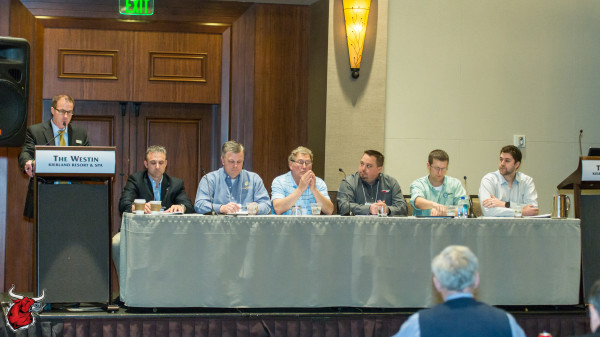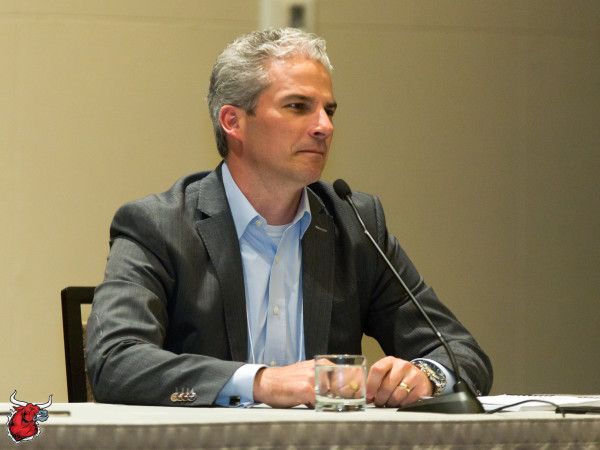Thus begins yet another round in the battle between public perception and livestock raising. As I reviewed the NYTIMES article (Read more: U.S. Research Lab Lets Livestock Suffer in Quest for Profit), I couldn’t help but wonder if this was yet another black eye or, as I feared, would this atrocity deliver the knockout punch to dairy industry credibility? (Read more: Dairy Cattle Abuse Video – A black eye for the dairy industry)
This time the Good Guys are Bad
Unfortunately the latest headlines shouted out that a well-respected organization was the guilty party. Immediately we in the industry blush with embarrassment. But wait. What is it about human nature that makes us think that the bigger the good reputation, the more likely the allegations are true? Or for that matter not true? The real question is “When did we put ourselves in the position of Judge and assume that what we read in black and white truly is a black or white representation of the truth?”
With every new black eye, the dairy and the general public has been softened up. Each new punch requires that we go on the defence. Somewhere inside you start to assume that eventually the challenge will be so formidable that defence becomes impossible. In this most recent case, the facts as presented accuse not only MARC but every veterinarian, supplier, consultant who entered their facility. Indeed, if the allegations are true, everyone failed at the most basic level to carry out their responsibility to protect and respect animal life.
Is this More of the Same?
I usually don’t have a problem giving a little room to those who criticize the dairy industry from an outside position. After all, it could be that they don’t have all the facts. However, when I read that MARC, a well-respected research facility was the defendant, I didn’t give them room for doubt or the assumption of innocence until proven guilty. I rapidly searched the Internet. I poured over reams of comments condemning what had been supposedly seen and reported. And then… I was significantly influenced to the negative, when a Senator stepping in and demanded a review — with a stringently short timetable.
It wasn’t until my mind was made up that I asked the second question: “Is there another side to this story!”
Why was I hesitating? Was it because of the presumed stature of MARC that I was prepared, “For the bigger they are, the harder they fall”? It is always bad when journalists, amateur videographers and sleuths set out to find and expose mistreatment of animals. So what flipped my “guilty” switch, when it was researchers and veterinarians being accused as perpetrators? Why did I allow my trust to be so swiftly shaken to the core?
I agreed wholeheartedly with Dan Murphy, who wrote an opinion piece about MARC’s questionable research for Drovers CattleNetwork, concluding “There is a line that must be drawn between research that produces beneficial results in terms of yield and efficiency, and projects that are conducted without the necessary regard for the health and welfare of the livestock involved.”
It is long past time for the entire industry to step up and admit their failure.
We can’t become spectators when our peers put the whole industry into a negative spotlight. If we expect the industry to continue into the future we can’t pull the childish excuse, “They did it. Not me!” We aren’t prepared for respected organizations to succumb to unethical behavior. The headlines blared: “U.S. Research Lab Lets Livestock Suffer in Quest for Profit / Animal Welfare at Risk in Experiments for Meat Industry.” That was followed up with an editorial that claimed “Farming Science, Without the Conscience.”
Which is worse? Getting a Black Eye? Or Turning a Blind Eye?
There can be no justification for animal mistreatment. The ends do not justify the means. As more and more questions are raised, one perspective is particularly upsetting. “Have the best-of-the-best in the science of modern animal agriculture became so tone deaf in their search for a better cow/pig/sheep that they ignored their better voices and intentionally tortured animals in a vain and misguided attempt to reach their goals?”
Don’t Assign Blame. Find Solutions!
As the media headlines grow ever more provocative, more shocking, and more attention grabbing, there is the temptation to blame them, if not for lying, at the very least for exaggerating. The truth is, the media is doing they’re doing their job. They are doing what they are paid to do. If our response is simply to wish that the attention would go away, it means that we are less than passive in dealing with these blows to our credibility.
It’s time to step up as an industry … all up and down the line … and demand that those we support with our dollars, advocacy and trust are accountable for the way they manage the animals in their care.
Sixty Days to Judgment – from the Top
USDA Secretary Tom Vilsack called for an immediate investigation to be completed in 60 days. But even this unprecedented speed could prove to be too little too late. Once again, laying blame and seeing that “heads will roll” does not address a problem that is a symptom of an entire industry that prefers to have a black eye, if it allows us to turn a blind eye to effective action.
Still, inquiring minds will want to know how much of the report was true. Could any of it be merely misconstrued observations by an untrained eye? Had MARC, in search of a better and more efficient animal, really crossed the line? Surely things have not gotten so out of hand that the goals of higher production, higher birth rates and the drive for more, more and more, has gone too far and has now put at risk, not only the dairy cattle, but the entire dairy industry?
One of the most scathing statements made in the accusatory articles arose from the point that the scientists were trying to make animals more productive to better feed the world. The question was posed, “Do people really want that if it means a decrease in animal welfare?”
By now you have probably sensed that my first accusatory position has been somewhat changed. If you’re reading The Bullvine, you are absolutely allowed to assume that my lifelong pro-dairy bias could be rising to the top. I will accept criticism of the bias but that does not mean an acceptance of animal mistreatment. The Bullvine holds ourselves and the industry to a standard of animal care that always seeks out the highest standards. But are we too easily accepting o slow progress toward raising those standards higher?
It was an opinion posted by (Matthew J Cherni, MS, DVM February 13th, 2015 ) that made me question my rapid rush to judgement against MARC. It gives us much to think about:
I was privy to the interview techniques used by Michael Moss, author of the New York Times article. Michael Moss was brought to my home, and introduced as a friend of someone I had worked with during much of my career at the USMARC. After a half an hour, to maybe as much as an hour of talking to Michael Moss I asked him what he did for a living, and he told me. I probably escaped being misquoted, or taken out of context like others referenced in the article only because after learning why he was visiting with me, I told him: “You do not have my permission to quote me, or use my name.” He protested, and I repeated my statement.
I spent a career (September, 1978-June, 2012) working as the sheep operations manager at the USMARC. I know, in many cases from firsthand knowledge prior to June, 2012, the accusations of animal mistreatment/abuse described in Mr. Moss’s article, and Dr. Jim Keen’s interview are without merit. Unfortunately for the sake of truth, it is not possible to prove something did not occur. I believe this story is the result of an unscrupulous HSUS/PETA sympathetic reporter being willingly fed false accusations by (a) disgruntled former employee(s), and a willingness by the reporter to misquote, take statements out of context, and exaggerate occurrences to support the accusations. Unfortunately, it is the people/consumers and livestock of America, and world who will suffer the most in the future if this article affects funding, or activities at the USMARC.”
People make mistakes. Accidents happen. We all understand that. But how do you make allowances for shortcomings of supposedly well-trained, highly motivated and industry respected individuals and organizations? We don’t. While many are anxiously awaiting the report demanded by Secretary Vilsack, it’s time to stop leaving the judgment calls to someone else.
The Bullvine Bottom Line
Wherever we are on the spectrum, we must take responsible action. And that has got to include responsible reporting as well.

Get original “Bullvine” content sent straight to your email inbox for free.
Other posts you might like:


















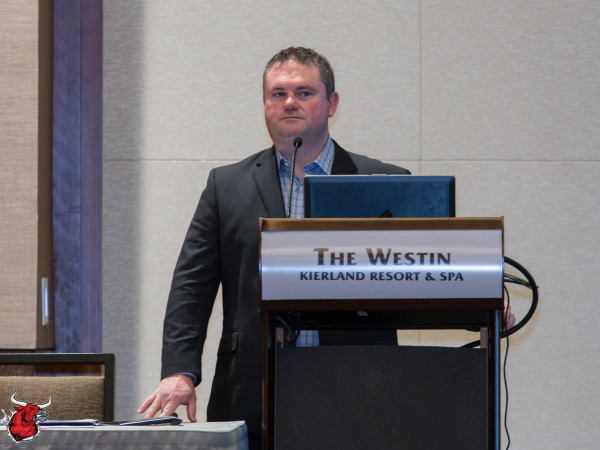 Welcome – Jeff Butler -Butlerview
Welcome – Jeff Butler -Butlerview Joao Durr – CEO of the Council on Dairy Cattle Breeding – Update on U.S. Genetic Evaluations: What’s to come?
Joao Durr – CEO of the Council on Dairy Cattle Breeding – Update on U.S. Genetic Evaluations: What’s to come? Brian Van Doormal – GM Canadian Dairy Network – Profitable Genetics in Canada: What are your priorities?
Brian Van Doormal – GM Canadian Dairy Network – Profitable Genetics in Canada: What are your priorities?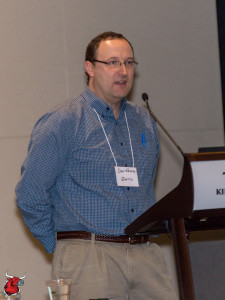 Dr. Dan Weigel, Zoetis – Genomics and the Commercial Dairyman
Dr. Dan Weigel, Zoetis – Genomics and the Commercial Dairyman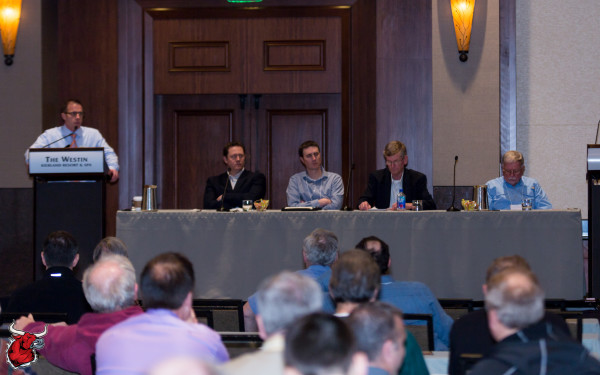
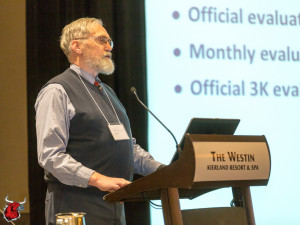 Dr George Wiggans – Research Leader, AIPL/ARS/USDA – Genomics and Where it Can Take Us
Dr George Wiggans – Research Leader, AIPL/ARS/USDA – Genomics and Where it Can Take Us